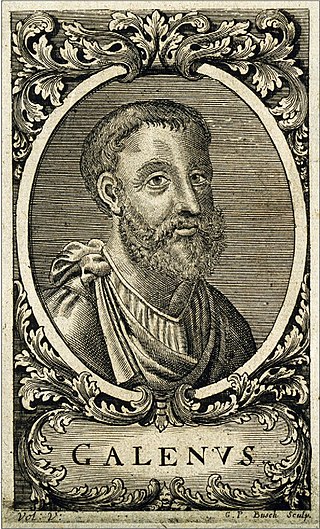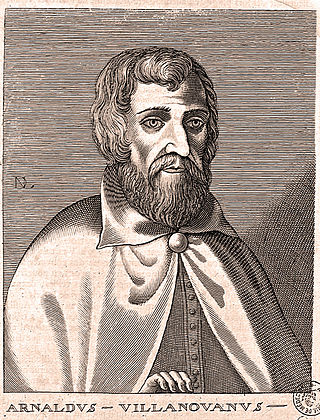Life
Armengaud Blaise [1] was a nephew of Arnau de Vilanova, as a son of a brother of Arnau's wife, Agnes. He studied medicine at the University of Montpellier. In 1289, he received his doctorate from the bishop, Berengar Fredol, over the objections of the faculty. In September 1296, he was working in Girona. Probably through the influence of his uncle, who joined the faculty of Montpellier in the 1290s, Armengaud had returned to the city by 1299.
In 1301, Armengaud was the personal physician of Queen Blanche of Aragon, living at Barcelona and occasionally attending court. In 1303, King James II appointed him his personal physician as well and Armengaud lived at the royal court for the next three years. He visited his uncle in Montpellier in July 1305. Between October 1306 and January 1307, he left the court of Aragon to become the physician of Pope Clement V at Avignon. In May 1309, he secured ecclesiastical benefices for his two underaged sons, Thomas and Bernard. He died in 1312.
Works
Armengaud made five translations and wrote two original works, all in Latin. He translated the Cantica of Avicenna with the commentary of Averroes directly from the Arabic at Montpellier in 1283 or 1284. He completed a translation of Galen's De cognitione vicium, previously translated into Arabic from Greek, at Montpellier in 1299.
In 1290, Armengaud translated into Latin the Quadrans circuli of Jacob ben Machir. The explicit of this translation specifies that it was made de hebreo in Latinum ... secundum vocem eius ("from Hebrew into Latin according to his speech"), which may mean that Jacob translated his own work from Hebrew into his vernacular Romance so that Armengaud could put it into Latin.
In 1294, Armengaud translated the De asmate of Maimonides. [5] According to the colophon, this was made ab arabico mediante fideli interprete ("from Arabic through a faithful interpreter"). This indicates that Armengaud could not read the Hebrew letters in which Maimonides' Arabic was written and needed to have it read aloud to him, possibly by Jacob ben Machir. In late 1305, he completed a translation of Maimonides' De venenis at Barcelona, presumably by the same method. [6] He dedicated it to Clement V.
Armengaud's Aphorismi survives in a single manuscript. It contains some two dozen gnomic statements on diet and urine, modelled on the Aphorisms of Hippocrates and the Parabole medicationis of Arnau, which his uncle completed in 1300. Armengaud's Tabula antidotarii is a table of a medicinal compounds that survives in seven manuscripts. There is a lot of variation between copies. The number of compounds contained in the table varies from 49 to 73. The original probably contained 68. There are six columns in the table. One for the name of the compound and five for its constituents, physical characteristics, medicinal properties, dosage and manner of administration. From an early date, the Tabula was thought to be derived from the Antidotarium Nicolai , but it seems to be an independent work. In 1306, following the expulsion of the Jews from France, the Tabula antidotarii was translated into Hebrew in Barcelona by Estori ha-Parḥi, a friend of Jacob ben Machir. There are three copies of the Hebrew translation.

Aelius Galenus or Claudius Galenus, often anglicized as Galen or Galen of Pergamon, was a Roman and Greek physician, surgeon and philosopher. Considered to be one of the most accomplished of all medical researchers of antiquity, Galen influenced the development of various scientific disciplines, including anatomy, physiology, pathology, pharmacology, and neurology, as well as philosophy and logic.

Moses ben Maimon (1138–1204), commonly known as Maimonides and also referred to by the Hebrew acronym Rambam, was a Sephardic rabbi and philosopher who became one of the most prolific and influential Torah scholars of the Middle Ages. In his time, he was also a preeminent astronomer and physician, serving as the personal physician of Saladin. He was born and lived in Córdoba within the Almoravid Empire, on Passover eve, 1138, until his family was expelled for refusing to convert to Islam. Later, he lived in Morocco and Egypt and worked as a rabbi, physician and philosopher.

Samuel ben Judah ibn Tibbon, more commonly known as Samuel ibn Tibbon, was a Jewish philosopher and doctor who lived and worked in Provence, later part of France. He was born about 1150 in Lunel (Languedoc), and died about 1230 in Marseilles. He is best known for his translations of Jewish rabbinic literature from Arabic to Hebrew. Samuel ibn Tibbon wrote his own philosophical works, including "Sefer ha-Mikhtav", which dealt with ethics and spirituality. Samuel ibn Tibbon's translations and commentaries had a significant impact on Jewish thought and scholarship during the Middle Ages. They helped to disseminate the ideas of Greek philosophy and Islamic science throughout the Jewish world, and they also contributed to the development of Jewish philosophy in their own right.
Ibn Tibbon is a family of Jewish rabbis and translators that lived principally in Provence in the 12th and 13th centuries.

The Emerald Tablet, also known as the Smaragdine Tablet or the Tabula Smaragdina, is a compact and cryptic Hermetic text. It was highly regarded by Islamic and European alchemists as the foundation of their art. Though attributed to the legendary Hellenistic figure Hermes Trismegistus, the text of the Emerald Tablet first appears in a number of early medieval Arabic sources, the oldest of which dates to the late eighth or early ninth century. It was translated into Latin several times in the twelfth and thirteenth centuries. Numerous interpretations and commentaries followed.
Jacob ben Machir ibn Tibbon, of the Ibn Tibbon family, also known as Prophatius, was a Jewish astronomer; born, probably at Marseilles, about 1236; died at Montpellier about 1304. He was a grandson of Samuel ben Judah ibn Tibbon. His Provençal name was Don Profiat Tibbon; the Latin writers called him Profatius Judæus. Jacob occupies a considerable place in the history of astronomy in the Middle Ages. His works, translated into Latin, were quoted by Copernicus, Reinhold, and Clavius. He was also highly reputed as a physician, and, according to Jean Astruc, Ibn Tibbon was regent of the faculty of medicine of Montpellier.

Isaac Israeli ben Solomon, also known as Isaac Israeli the Elder and Isaac Judaeus, was one of the foremost Jewish physicians and philosophers living in the Arab world of his time. He is regarded as the father of medieval Jewish Neoplatonism. His works, all written in Arabic and subsequently translated into Hebrew, Latin and Spanish, entered the medical curriculum of the early thirteenth-century universities in Medieval Europe and remained popular throughout the Middle Ages.

Yehuda Alharizi, also Judah ben Solomon Harizi or al-Harizi, was a rabbi, translator, poet, and traveler active in al-Andalus. He was supported by wealthy patrons, to whom he wrote poems and dedicated compositions.

Arnaldus de Villa Nova was a physician and a religious reformer.

Abraham Maimonides was the son of Maimonides and succeeded his father as nagid of the Egyptian Jewish community.

Guy de Chauliac, also called Guido or Guigo de Cauliaco, was a French physician and surgeon who wrote a lengthy and influential treatise on surgery in Latin, titled Chirurgia Magna. It was translated into many other languages and widely read by physicians in late medieval Europe.

Latin translations of the 12th century were spurred by a major search by European scholars for new learning unavailable in western Europe at the time; their search led them to areas of southern Europe, particularly in central Spain and Sicily, which recently had come under Christian rule following their reconquest in the late 11th century. These areas had been under Muslim rule for a considerable time, and still had substantial Arabic-speaking populations to support their search. The combination of this accumulated knowledge and the substantial numbers of Arabic-speaking scholars there made these areas intellectually attractive, as well as culturally and politically accessible to Latin scholars. A typical story is that of Gerard of Cremona, who is said to have made his way to Toledo, well after its reconquest by Christians in 1085, because he:
arrived at a knowledge of each part of [philosophy] according to the study of the Latins, nevertheless, because of his love for the Almagest, which he did not find at all amongst the Latins, he made his way to Toledo, where seeing an abundance of books in Arabic on every subject, and pitying the poverty he had experienced among the Latins concerning these subjects, out of his desire to translate he thoroughly learnt the Arabic language.

Ishtori Haparchi (1280–1355), also Estori Haparchi and Ashtori ha-Parhi is the pen name of the 14th-century Jewish physician, geographer, and traveller, Isaac HaKohen Ben Moses.
Hillel ben Samuel was an Italian physician, philosopher, and Talmudist. He was the grandson of the Talmudic scholar Eliezer ben Samuel of Verona.
Bahiel ben Moses was a Jewish physician of the thirteenth century. He was court physician to King James I of Aragon, and in that capacity was present at the conquest of Majorca, where he rendered valuable service as interpreter between the Arabic-speaking Majorcan Moors and the conqueror, who understood only the Limousin dialect. In the dispute concerning Maimonides' writings, Bahiel made himself by his zeal the leading representative of the philosopher's defenders. In 1232 he wrote the appeal to the Jewish congregations of Aragon to recognize the excommunication pronounced upon Solomon ben Abraham of Montpellier and his associates. Bahiel was the brother of Solomon Bahiel ben Moses.
Moses ibn Tibbon was a Jewish physician, author and translator in Provence. The number of works written by Moses ibn Tibbon suggest that he reached a great age.
Abraham de Balmes ben Meir was an Italian Jewish physician and translator of the early 16th century.
Abraham Abigdor, born 1350, was a Jewish physician, philosopher, kabbalist, and translator. He should not be confused with Maestro Abraham Abigdor, who in 1386 was the proprietor of a house at Arles.
Zerahiah ben Shealtiel Ḥen, also called Zerahiah ben Shealtiel Gracian or Serachja ben Isaac Ben Shealtiel Halevi was a Spanish Jewish physician, philosopher, translator, and Hebraist. He flourished about the end of the thirteenth century. He was born either at Barcelona, or at Toledo. He is sometimes confused with Zerahiah ben Isaac ha-Levi Saladin, also a translator.
Gerrit Bos is professor emeritus of Jewish studies.











